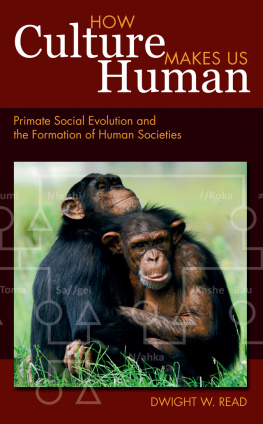PRIMATES
THE BRITANNICA GUIDE TO PREDATORS AND PREY
PRIMATES
EDITED BY JOHN P. RAFFERTY, ASSOCIATE EDITOR, EARTH AND LIFE SCIENCES

Published in 2011 by Britannica Educational Publishing
(a trademark of Encyclopdia Britannica, Inc.)
in association with Rosen Educational Services, LLC
29 East 21st Street, New York, NY 10010.
Copyright 2011 Encyclopdia Britannica, Inc. Britannica, Encyclopdia Britannica,
and the Thistle logo are registered trademarks of Encyclopdia Britannica, Inc.
All rights reserved.
Rosen Educational Services materials copyright 2011 Rosen Educational Services, LLC.
All rights reserved.
Distributed exclusively by Rosen Educational Services.
For a listing of additional Britannica Educational Publishing titles, call toll free (800) 237-9932.
First Edition
Britannica Educational Publishing
Michael I. Levy: Executive Editor
J.E. Luebering: Senior Manager
Marilyn L. Barton: Senior Coordinator, Production Control
Steven Bosco: Director, Editorial Technologies
Lisa S. Braucher: Senior Producer and Data Editor
Yvette Charboneau: Senior Copy Editor
Kathy Nakamura: Manager, Media Acquisition
John P. Rafferty: Associate Editor, Earth and Life Sciences
Rosen Educational Services
Alexandra Hanson-Harding: Editor
Nelson S: Art Director
Cindy Reiman: Photography Manager
Matthew Cauli: Designer, Cover Design
Introduction by Catherine Vanderhoof
Library of Congress Cataloging-in-Publication Data
Primates / edited by John P. Rafferty. 1st ed.
p. cm. (The Britannica guide to predators and prey)
In association with Britannica Educational Publishing, Rosen Educational Services.
Includes bibliographical references and index.
ISBN 978-1-61530-408-0 (eBook)
1. PrimatesJuvenile literature. I. Rafferty, John P.
QL737.P9P6762 2011
599.8dc22
2010032414
On the : A gorilla named Baghira holds her baby, Kajolu, in their enclosure at Tierpark Hellabrun zoo in Munich, Germany, on January 22, 2010. Oliver Lang/AFP/Getty Images
On page : Coquerels sifaka (Propithecus coquereli). Christopher Call Productions
On pages : Gorilla (Gorillla). shutterstock.com
CONTENTS

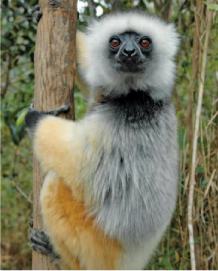
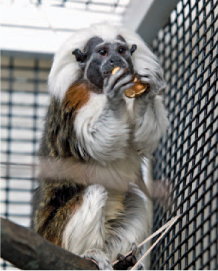

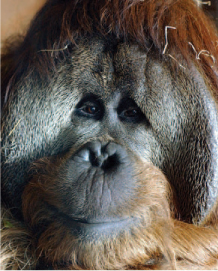


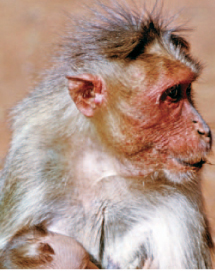


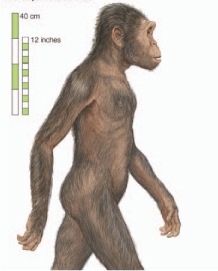



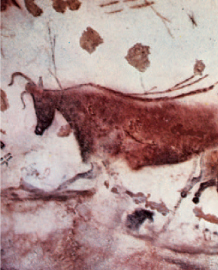
INTRODUCTION

D uring the Scopes monkey trial of 1925, supporting the state of Tennessees ban on the teaching of evolution, lawyer William Jennings Bryan famously decried evolutions claim that human beings were descended not even from American monkeys, but from Old World monkeys. Of course, evolutionary theory does not suggest that humans are descended from any living monkey species at all. Over 20 million years ago, however, humans and monkeys did indeed share a common evolutionary ancestor. While political battles over how evolution should be taught still continue, there is no question that humans, apes, monkeys, and a wide variety of other species all fall taxonomically within the order Primates. In this book you will meet all the members of the order, as well as explore the unique development of the human branch of the family tree.
With more than 300 distinct species, primates are in fact the third most diverse order of mammals, encompassing creatures as diverse as lemurs, lorises, and tarsiers, as well as the more familiar monkeys and apes. So what makes all these different animals related? All primates have several traits in common. They are the only mammals that have flat nails on their fingers and toes rather than claws or hooves. They also possess specialized nerve endings in the hands and feet that increase their tactile sensitivity and a big toe separated from the others that is suitable for grasping. However, only a few have an opposable thumb. Compared to other terrestrial mammals, primate brains are larger in proportion to their body weight, with a unique brain structure for visual perception. Primate teeth are also distinct from other mammals, and thus it is relatively easy to recognize fossil remains that belong to this order, the oldest of which date back to the beginning of the Eocene Epoch approximately 56 million years ago.
The evolutionary adaptations common to primates suggest that the first primate species were most likely tree-dwellers and predators, possibly insect eaters. This determination is based on the presence of grasping feet, the tactile sensitivity in the hands and feet, and the forward-facing orientation of their eyes. Modern primate species have evolved to thrive in a variety of environments. The body size of modern primates ranges from the tiny 35-gram (1-ounce) mouse lemur to the large 180-kg (400-pound) gorilla. Primates may travel by leaping or swinging from branch to branch or by walking on either two or four legs. (Humans, however, are the only modern primate species that consistently practice bipedalism.) Non-human primates are widely distributed throughout the tropical regions of Africa, India, Southeast Asia, and South America. A few species are also adapted to life in the more temperate regions of China and Japan. Many primate species are now considered endangered due to loss of habitat, which is particularly acute in Asia and to a lesser extent in Africa and South America.
Primates generally have an extended developmental cycle. Juveniles often remain under the care of adults for a relatively long period to learn the skills necessary to survive and to integrate themselves into the complex social structure of the family or community group. Most primates are omnivorous, eating everything from leaves, stems, and tubers to fruits, vegetables, insects, birds eggs, crustaceans, snakes, lizards, and small mammals. Such variability in behavior, along with their ability to adapt to a variety of different circumstances, has helped primates survive for tens of millions of years.
Next page



